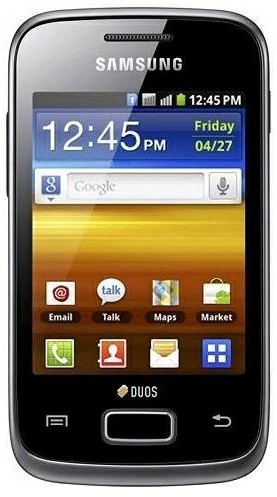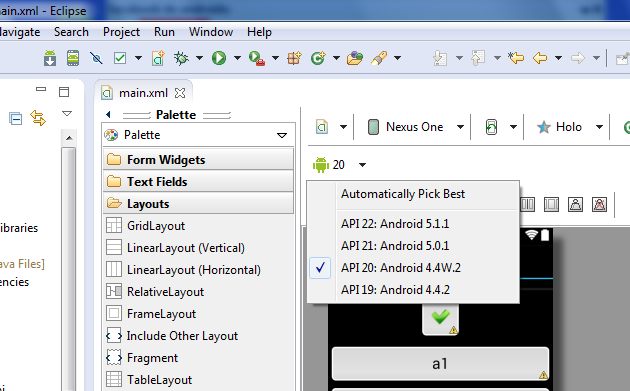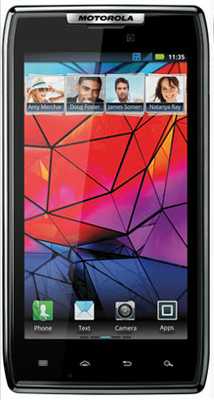Nejlepลกรญ mobil s Androidem - jak nakupovat
Kvalitnรญ mobilnรญ telefon pro rok 2012 by mฤl mรญt tyto, nebo jeลกtฤ lepลกรญ parametry.
Znaฤka Samsung , HTC, LG, Motorola, Sony Ericsson, ZTE Blade
Verze operaฤnรญho systรฉmu Android 2.2 a vyลกลกรญ.
Procesor a jeho frekvence Qualcomm 800MHz a vyลกลกรญ.
Pamฤลฅ RAM 512MB a vรญce.
Pamฤลฅ ROM 512MB.
Displej a jeho rozliลกenรญ 4,3 palce rozliลกenรญ 480x800 pixelลฏ pro snadnรฉ ovlรกdรกnรญ a ฤtenรญ a schopnost zobrazit 16 milionลฏ barev.
Technologie 3G data, WiFi, BlueTooth, GPS pลijรญmaฤ, fotoaparรกt 3 Mpix, autofokus, diodovรฝ blesk.
Vรฝdrลพ baterie minimรกlnฤ 1 den a vรญce.
3G internet.

Znaฤka Samsung , HTC, LG, Motorola, Sony Ericsson, ZTE Blade
Verze operaฤnรญho systรฉmu Android 2.2 a vyลกลกรญ.
Procesor a jeho frekvence Qualcomm 800MHz a vyลกลกรญ.
Pamฤลฅ RAM 512MB a vรญce.
Pamฤลฅ ROM 512MB.
Displej a jeho rozliลกenรญ 4,3 palce rozliลกenรญ 480x800 pixelลฏ pro snadnรฉ ovlรกdรกnรญ a ฤtenรญ a schopnost zobrazit 16 milionลฏ barev.
Technologie 3G data, WiFi, BlueTooth, GPS pลijรญmaฤ, fotoaparรกt 3 Mpix, autofokus, diodovรฝ blesk.
Vรฝdrลพ baterie minimรกlnฤ 1 den a vรญce.
3G internet.

396LW NO topic_id
AD
Dalลกรญ tรฉmata ....(Topics)
Click to Android version combobox - drop down menu and select your version, which just using (have instaled). For example: You updated ADT by SDK manager, but forget toย update Android version. You can use lower version from drop down menu, which using your project, or do update of Android by SDK manager.


Landscape - portrait orientation change:
boolean mbOrientationLandscape = true;
if(mbOrientationLandscape ){
setRequestedOrientation(ActivityInfo.SCREEN_ORIENTATION_PORTRAIT);
mbOrientationLandscape =false;
}else{
setRequestedOrientation(ActivityInfo.SCREEN_ORIENTATION_LANDSCAPE);
mbOrientationLandscape =true;
}
| Brand | Motorola |
| Model (codename) | Droid Razr |
| Price (cena, vฤetnฤ DPH v KCZ) | 10800 / 06.2012 |
| Display size in Inch (v palcรญch) | 4.3 |
| Display-resolution | 540x960 |
| Dotek-typ | capacitive |
| CPU typ | TI 4430 |
| CPU MHz | 1.2 GB |
| CPU core | 2 |
| L2 cache | |
| RAM | 1024 |
| ROM | 15600 |
| GPU | SGX540 |
| NenaMark2 Benchmark | |
| GPU-GLBenchmark | 3299 |
| Baterie mAh | 1780 |
| Foto MPx | 8 |
| Autofocus | AF |
| Video | HD video 30 frames/s |
| Official Android ICS | Google Android 2.3.5 (Gingerbread) |
| CyanogenMod support | |
| Dotek-prstลฏ-max | 10 |
| Display-ppi | 256 |
| Display-retina | 79% |
| Networks | |
| Connectivity | GSM: 850/900/1800/1900 MHz, EDGE, GPRS 3G: 900/2100 MHz, HSDPA, HSUPA, HSPA+ Bluetooth: 4.0 (EDR, A2DP, FTP, PBAP, AVRCP) Wi-Fi: 802.11b/g/n PC: microUSB, USB 2.0, microHDMI Senzors: proximity, gyroskop, akcelerometr GPS: yes, A-GPS, digital compas |
| Note | Super AMOLED Display |
Motorola Droid Razr image

Map TreeMap key value pair, Map sort by key, Iterator for Map Java Android example.
MainClass.java
MainClass.java
import java.util.ArrayList;
import java.util.Collections;
import java.util.Iterator;
import java.util.List;
import java.util.Map;
import java.util.Set;
import java.util.TreeMap;
public class MainClass {
public static void main(String[] arg) {
// english;germany dictionary
String[] arrayOfString = { "one;eine", "two;zwei", "three;drei", "four;vier" };
Map<String, String> map = new TreeMap<String, String>();
for(String s: arrayOfString){
String[] array = s.split(";");
String sKey ="", sValue="";
if(array.length > 1){
sKey = array[0]; sValue = array[1];
map.put(sKey, sValue);
}
}
List sortedByKeys=new ArrayList(map.keySet());
Collections.sort(sortedByKeys);
// iterate map
Set references = map.keySet();
Iterator it = references.iterator();
while (it.hasNext()) {
String key = (String) it.next();
String value = map.get(key);
System.out.println(key + " = " + value);
}
// or other example how iterate map
TreeSet<String> keys = new TreeSet<String>(map.keySet());
for (String key : keys) {
String value = map.get(key);
System.out.println(key + " = " + value);
}
// check if key exists
// if( map.containsKey("two")){
// System.out.print("two = " + map.get("two"));
// }
}
}
/*
four = vier
one = eine
three = drei
two = zwei
*/
Failed to rename directory ....
If using for update Android SDK manager,
try close Eclipse if is open.
Or change security settings of the folder which have problem.
Or disable antivirus for a moment.
If using for update Android SDK manager,
try close Eclipse if is open.
Or change security settings of the folder which have problem.
Or disable antivirus for a moment.
Editace: 2012-06-08 08:30:16
Poฤet ฤlรกnkลฏ v kategorii: 396
Url:nejlepsi-mobil-s-androidem-jak-nakupovat



